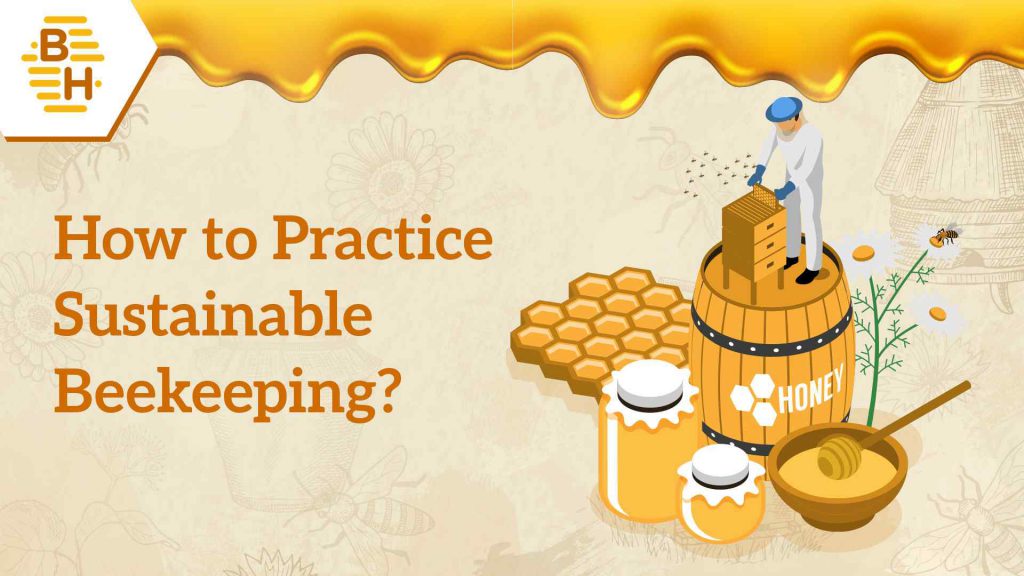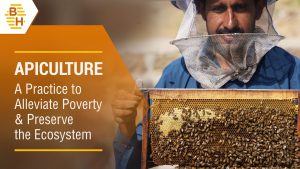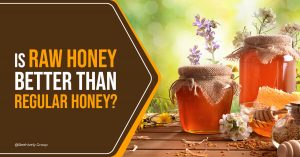Sustainable beekeeping is the key to assure the welfare of honeybees. Health resides in the whole honeybee population of a region and not just an individual colony. Honeybees require widespread, viable populations to retain population diversity and colony flexibility. However, beekeepers have often focused on their own apiaries, whilst ignoring wider welfare.
For thousands of years beekeeping has been a skill utilizing low-impact technologies to deliver great benefits to people and biodiversity. The need for sustainable beekeeping and more natural practices has been introduced only in the last hundred years since honey production and pollination of monocultures have been a priority over the health of the super organism and wider bee populations. Humans cease to realize the importance of bees in lives and in securing the environment. Let’s talk about the 3 prime roles that honeybees play in securing the environment.
Key Roles of Honeybees:
- Spreading pollen and fertilizing flowers as well as crucial agricultural crops
- A single honeybee colony can pollinate over 100 million flowers in a day
- Over one-third of world’s food is pollinated by the bees
Though honeybees are wild insects, humans have been domesticating them in order to obtain honey and wax. The domestication of bees has developed a close relationship between bees and humans which began with honey hunting, grew into keeping bees in hives and eventually the science and art of beekeeping developed. With the initiation of monocultures and damaged natural environments humans now also keep bees for pollination. However, it is believed that there would have been a time when bees living in the wild would have filled this role adequately. Due to domestication of bees, the impact of humans on the welfare of honeybees has increased. Let’s further discuss the 3 ways humans affect the welfare of honeybees.
3 Ways Humans Affect Welfare of Honeybees
In different parts of the world the nature and impact of the relationship between bees and humans differ. Let’s further discuss the 3 dimensions in which this association can be considered.
- Humans impact honeybees through the methods they use to manage their habitat for nesting, feeding as well as the environment that is provided to the bees.
- The natural distribution and the genetic diversity of honeybees observe an impact of humans as they move the bees out of their natural range, breeding, selection and queen importation.
- Humans also affect the welfare of bees on colony management, manipulation and hive technology.
It should be further noted that the above-mentioned dimensions of beekeeping vary in their importance in achieving sustainability.
Further on, climate change is one of the vital factors that accounts for pushing species towards endangerment or even extinction. With changing weather patterns and rising temperatures, environment is becoming inhabitable for many species. Even our beloved bees who play a crucial role in sustaining our way of living are struggling with inhabitable environments.
As many species of bees are in danger, it can lead to a decrease in biodiversity and can affect the ecosystem drastically. Apart from global warming, the other factor that poses a threat to the bee population is the excessive use of pesticides. The use of pesticides on plants becomes toxic for the bees leading to a decline in population. According to the International Union for Conservation of Nature (IUCN) globally 16 species of bees are vulnerable, 18 are endangered while 9 are critically endangered. This has led to an increased importance of sustainability in beekeeping/apiculture. Bees play a crucial role in sustaining our way of living more than we realize.
It has become crucial to talk about sustainable beekeeping as many species are struggling to survive due to climate change, use of pesticides and inhabitable environments. Beekeeping is sustainable when the relations between humans and honeybees lead to a positive contribution in assuring healthy populations of locally adapted bees living in the wild and in the apiaries of bee breeders. Let’s understand the current sustainable beekeeping practices.
Sustainable Beekeeping Practices
In order to sustain both bees and beekeepers, bees must survive in larger numbers. For sustainable beekeeping, a beekeeper would always primarily require keeping extra bee colonies in production. Beekeepers can achieve it through growing nuclei colonies established during the peak of bee population, from swarm prevention practices (making nuclei) or by catching swarms and removing bees from buildings. Sustainable beekeepers keep nuclei alive during the winter and utilize them as bee banks to reinforce full sized colonies during colony buildup and just before honey production.
BeeHively group promotes sustainable beekeeping as well as an approach that can help in preserving bees and increase their population. Other sustainable practices for beekeeping include flower-rich landscapes, a clean water source, abundant nectar and pollen as well as plant resin. The center of Beekeeping management must be the natural processes and life cycle of bees. This type of sustainable and environment-friendly beekeeping supportsin maintaining viable and native populations of bees, which in turn provides high-quality honey and its by-products.




